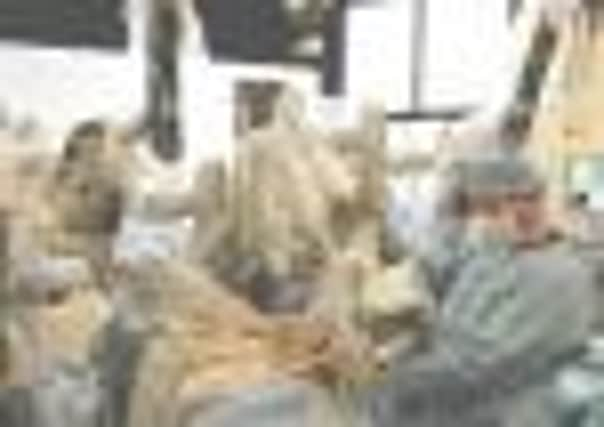Robots do save lives... and I’m still here to prove it


But for the self-confessed “techie”, it was both a surprise and a comfort when his surgical team offered him the chance to become one of the first patients in the UK to have an operation for bowel cancer using a robot.
Nearly three years on, he is free of the disease but also playing an important part in a ground-breaking international trial led by researchers in Yorkshire to evaluate the effectiveness of robotic surgery in treating rectal cancer.
Advertisement
Hide AdAdvertisement
Hide AdExperts plan to examine rates of survival and recurrence of the disease by comparing outcomes after robotic and conventional keyhole surgery in 400 patients at more than 20 sites around the world.


The £1.2m study is one of the first international trials to be co-ordinated by the Clinical Trials Research Unit, based at Leeds University, which has established a worldwide reputation from landmark work that has already led to significant change in NHS clinical practice for patients.
The research will also evaluate the bill for state-of-the-art robots, which are increasingly being used for a range of operations, but cost around £1.6m.
Surgeons believe the extra investment could be justified as robots offer a range of potential benefits over conventional keyhole surgery, which has superseded traditional “open” surgery in growing numbers of fields. Keyhole surgery involves making several small incisions in patients and manually operating instruments according to images transmitted to a screen from a camera.
Advertisement
Hide AdAdvertisement
Hide AdIn contrast, colorectal surgeon David Jayne sits at a control panel around 10ft from his patient where he manipulates similar instruments via a robot in an operating theatre at Leeds General Infirmary.


Whatever he does with his hands, is translated into movements of the robot’s arms.
One of the key advantages is that the images he sees are in three dimensions, giving him depth of vision as he performs movements as intricate as tying knots in sutures.
Mr Jayne said the robot was more straightforward to operate, making his manoeuvres more accurate.
Advertisement
Hide AdAdvertisement
Hide AdHis improved vision meant he could avoid errors including damaging nerves – a known risk during pelvic surgery which can lead to lifelong complications for patients.
He said: “It does facilitate the surgery. The three-dimensional depth of field is very useful, particularly knowing your position in the operative field.”
Co-investigator Charles Tsang, from Singapore, said: “It offers more dexterity and the superb optics make it more intuitive. The surgeon is in control every step of the way.”
Mr Jayne said patients were far more concerned about the diagnosis of cancer than the use of the robot.
Advertisement
Hide AdAdvertisement
Hide Ad“I think they see it as a novelty. Although we call it a robot, it’s not a true robot in that it’s not going to start doing the operation,” he said. “This is a master-slave device and will only do what we tell it to do.”
The study, backed by the Medical Research Council and the National Institute of Health Research with major hubs in Yorkshire, California and Singapore, will look at clinical outcomes ranging from 30-day complication rates to three-year survival rates, the quality of life of patients and the associated costs.
Mr Garbett, 59, was asked to help the research team put together information for participants in the trial.
It followed his successful treatment using the robot after his diagnosis with cancer in June 2008. His wife Felicity insisted he was checked out after developing symptoms characteristic of the illness – and then re-examined after initial investigations did not reveal any problems.
Advertisement
Hide AdAdvertisement
Hide Ad“Anybody who knows me knows I’m a bit of a techie,” he said. “I found it quite comforting that the latest technology was going to be used in the operation and I knew they wouldn’t use it on me if it wasn’t safe and that I wouldn’t be some kind of guinea pig – although I can imagine that it could be disconcerting for some people.
“I think it’s unfortunately named as a robot, which conjures up images of something like a Dalek, but it doesn’t act autonomously.”
Mr Garbett was in hospital for about a week after surgery and later had a course of chemotherapy. He was able to begin work again after six months.
“I was one of the first in the UK to be treated for bowel cancer with this technology,” he said.
“It’s thanks to the support of my wife, and friends and family, as well as the skill of Mr Jayne and the robot, that I’m here today.”